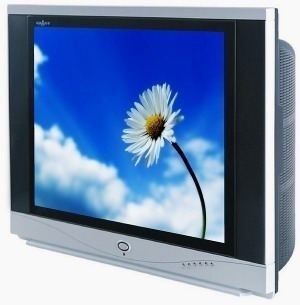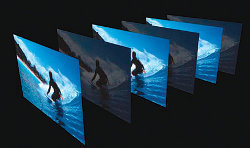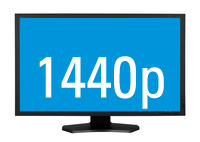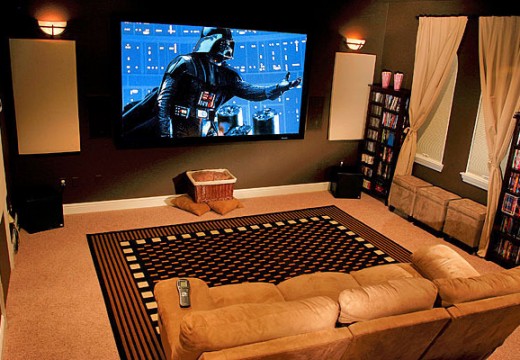If you are wondering how a color television works, you should first understand how a standard TV set works and how the brain perceives TV signals.
How a TV works
For the most part a TV station broadcasts a television program by converting a television program (sound and video) into a radio frequency which is then transmitted to a broad area. A TV set receives these signals and then turns these signals into sound and video by converting the radio frequency into an image. The image is created by small pixels being shot from an electron gun on the back of your TV set. The image you see is obviously not a real image, it is a series of very small dots called pixels which are perceived by your brain as a full image.
How the Brain Perceives Images
The reason TV works is partly due to the way the brain perceives information. All TV sets show images made from thousands of very small dots called pixels, however when these small pixels are closely packed together they create an image to our brain. The amount of pixels in an image can determine the quality of a picture, usually the more pixels in an image, the higher the quality. HDTV is known for creating more pixels than standard TV.
Cathode Ray Tube is Essential to the TV Color Process
Most TV's in use today use a cathode ray tube, commonly referred to as a CRT (Please note that digital TV's such as LCD and Plasma use other technologies). The CRT is the primary technology behind the standard TV set.
The word cathode is a word used in electronics. Just like most people use positive and negative when referring to a battery, the word anode and cathode are used as well. Anode refers to being positive, cathode means being negative.
Inside a cathode ray tube, there is a filament that is heated up, just like your ordinary, everyday light bulb. However, the filament is heated up in a vacuum inside a glass tube instead of a glass light bulb. Cathode stands for the filament in a glass tube, the ray from "cathode ray tube" stands for the stream of electrons that are created and that stream from the filament.
Inside the TV set is also a flat screen which is on the other end of the cathode ray tube. This screen is coated with a chemical called phosphor. Phosphor has special qualities that make it give off light when struck.
Getting back to the cathode ray tube, when the filament heats up and the ray, which is the stream of electrons are created. Electrons are negative in charge (cathode), and they seek a positive charge (anode). The electrons are drawn to a focusing anode inside the CRT tube and create a tight beam that is extremely fast. This tight, fast beam of electrons comes shooting out hitting the flat screen at the opposite end. Remember, this flat screen is coated with phosphor and will glow when it is struck with electrons.
Color TV screens have three electron beams that shoot out of the CRT to the flat screen. Each of these beams has a name: red beam, green beam and blue beam. The screen of a color TV set is actually made up of three different sheets of phosphor. While black and white TV's only have one sheet of phosphor, color TV's have a screen coated with red, blue and green phosphors sheets. These phosphor sheets are arranged in dots or can be arranged in stripes. You can't see these dots or stripes with the naked eye, however if you have a powerful magnifying glass, you will be able to view them. Finally, inside the sheet is a device called a shadow mask. A shadow mask is a screen with very tiny holes. These tiny holes are aligned with the red dots or stripes. They help provide a clear picture for the viewer.
Creating Color
TV's create color by mixing the red, blue and green beam and sheets. For instance, the color blue can be created by shooting the lue beam at the blue phosphor sheet. White is created when all three beams are shot at all three phosphor sheets. Mixing all three colors create white, however black is created by turning off all three beams. Other colors can be created using the primary colors of red, blue and green.
Color TV Signal
A color TV signal is similar to a black and white signal; however there is an extra chrominance signal that is added on. This extra chrominance is added by superimposing a 3.579545 MHZ sine wave on the end of a standard black and white signal. A color TV signal includes eight cycles of the 3.579545 MHZ sine wave after a horizontal sync pulse. This process is called a color burst.
In addition to the chrominance signal and color burst, you will have a phase shift that follows. A phase shift is a signal that indicates what color is to be displayed by the TV set. The signal determines this by the amplitude of the signal as well as the saturation. It is important to note that black and white TV's filter out the chrominance signal.




Elveera
The best channel, good programs especially Utaran and balika vadhu.
Therefore I wish to give valuable comments:
1. Simar takes long time to answer which is very annoying
2. please donot promote alcohol consumption whenever the character is sad e.g Kunal in Parichay and Rughuvendra in Utaran.
Ashish
its easy & nice to understand thnx 🙂